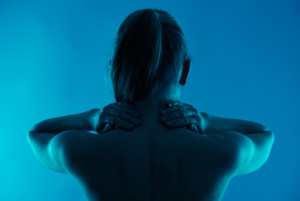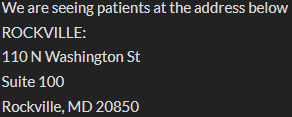Physical Therapy Rockville, MD
 As a physical therapy in Rockville, MD from Pain & Arthritis Relief Center often tells patients, a physical therapist is someone who is knowledgable in body movement and functions. Their programs are directed at healing injury, preventing injury, and improving loss of movement. Physical therapists educate their patients on how to take care of their body and suggest certain exercises to do at home.
As a physical therapy in Rockville, MD from Pain & Arthritis Relief Center often tells patients, a physical therapist is someone who is knowledgable in body movement and functions. Their programs are directed at healing injury, preventing injury, and improving loss of movement. Physical therapists educate their patients on how to take care of their body and suggest certain exercises to do at home.
Why would someone need a physical therapist?
There are numerous reasons why someone may seek a physical therapist, but among the most prevalent is pain in the knee joint. This joint is a hinge that connects the femur and tibia at the knee cap. There are four ligaments that offer support to the knee and if any undergo injury, the entire knee joint is affected.
What kinds of injuries are common for knees?
There are two rings of cartilage attached to the tibia (shin bone) that are responsible for absorbing shock of the knee. As this cartilage wears away over the course of time, osteoarthritis causes knee swelling and pain. Knee pain may develop suddenly or gradually get worse, either due to injury, a medical condition, or normal wear. Examples of knee pain that can improve through Rockville, MD physical therapy are listed as follows:
- Ligament Tear Pain: results from direct blow to knee, when put under a sudden pivot or twisting while foot is firmly on ground.
- Anterior Knee Pain: caused when the kneecap gets moved out of its resting position, and may happen from overuse of the joint or repeated movements.
- Medial Knee Pain: develops when MCL gets bothered by an injury or overuse, a patient often feels pain when walking up/down a hill or squatting.
- Lateral Knee Pain: happens when the iliotibial band is irritated, and pain may be felt like walking, running, or climbing up stairs.
Where does knee pain first develop?
Pain may happen within the knee where cartilage has worn down. It may start as mild discomfort and grow worse. Eventually, a person may no longer be able to tolerate the pain or restriction motion, motivating them to seek our help at the Pain & Arthritis Relief Center. If you aren’t able to fully bend or straighten out your knee, have trouble with stairs, or cannot smoothly rise from a seated position, then we suggest contacting us now for a consultation.
What will my knee exam and consultation be like?
If you are receiving physical therapy for knee pain, your first visit will be pivotal in ensuring you get a diagnosis that is correct and a treatment plan that suits you best. Your physical therapist will ask you questions about the current problem, as well as any past medical conditions or medications that they should know about. These questions are aimed to uncover what the root cause of the problem is, and then create a treatment plan that addresses those needs.
During your initial consultation and examination, there may be several assessments including:
- Range of motion: this refers to how far extended the knee can go when bending or straightening out. A physical therapist can use instruments to evaluate how much normal range you currently have since the injury.
- Gait: you may be asked to walk around so your PT can notice small changes in motion around the knee, and how it affects the rest of the body when moving.
- Balance: if your balance is off, this may add more pressure and strain onto the knee, causing pain and other symptoms.
- Strength: this will help your physical therapist determine whether you have muscle weakness or imbalance due to the knee injury.
- Swelling: inflammation is a common sign of knee injury. Your PT can measure how much swelling you have as a way to choose the direction for your care plan.
- Other: depending on the case, your physical therapist may suggest other diagnostics to uncover more information about your injury.
After the exam is complete, your physical therapist will discuss your recommended treatment. It is imperative to the outcome of your healing to participate in the plan and abide by your physical therapist’s suggestions. If you have questions about your care plan, bring this to the attention of your PT right away. You may be given exercises and stretches to perform at home as part of your program. Examples of these tools can include:
- Lower extremity stretches
- Balance exercises
- Straight leg raises
- Quad sets
- Short arc quads
- Strengthening hip weakness
We Are Here To Help
At our clinic, we have seen how physical therapy has benefited our patients. They are more able to go about their lives impacted by less pain and discomfort. If you need a physical therapist for a joint-related issue, don’t hesitate to contact the Pain & Arthritis Relief Center to learn more about our physical therapy in Rockville, Maryland.





